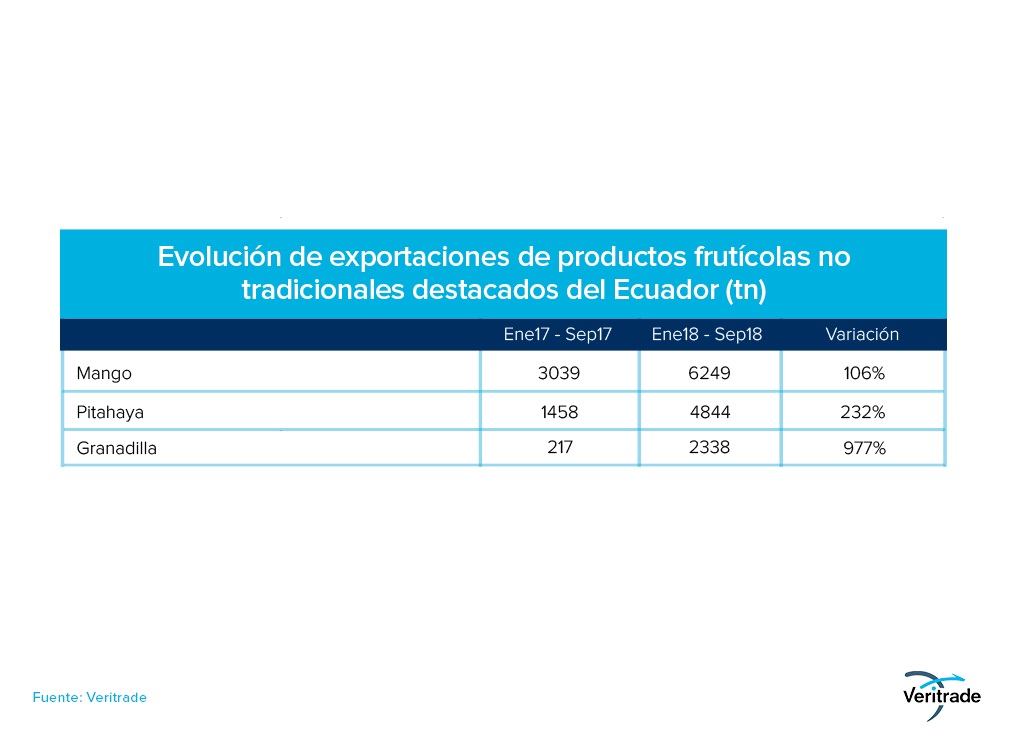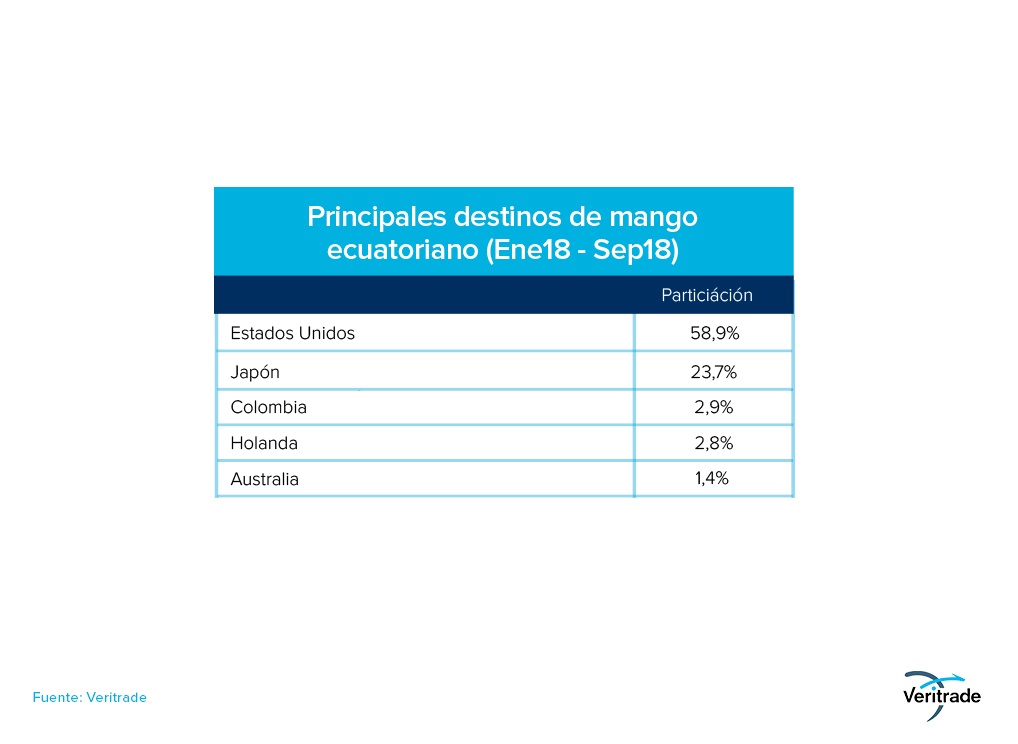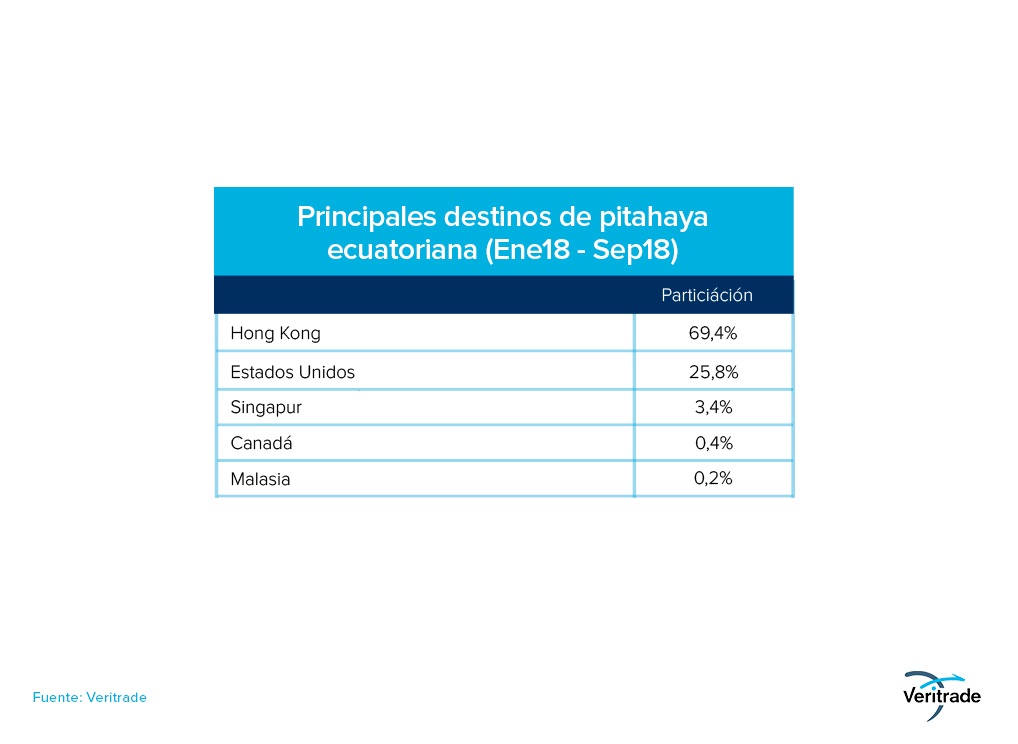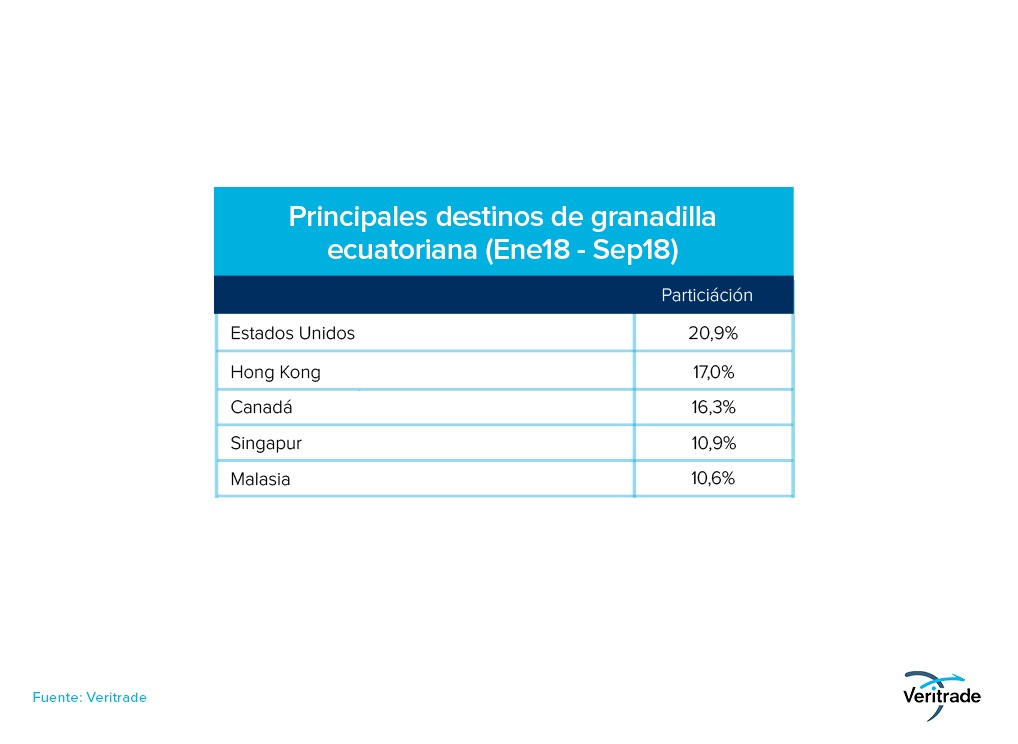Ecuadorian fruits of non-traditional export upwards
Published on 04 December 2018
The products not usual in the Ecuadorian agro-export portfolio are making their way into new markets.
The geography of Ecuador allows the country to position itself as an important provider of tropical fruits for the rest of the world. As a result, the country has managed to diversify its agricultural export offer, traditionally based on bananas, coffee, cocoa and flowers.
In the following table, you can see the growth of the most outstanding non-traditional products throughout this year, expressed in terms of quantity.

The mango, whose campaign is carried out between September and January, has had a good start to the season, and between September and October of this year US $ 18 million has been exported, compared to US $ 10 million in 2017. The main destination It is still the United States, followed by Japan, where it has been penetrated for many years.
However, the rest of the Asian market has a high potential, which should be taken advantage of with sanitary treaties such as that achieved with China in 2016. It should be noted that a large part of mango shipments are delivered by air (7%).

In the case of pitahaya, the largest exports have been driven by the opening of the US market, where it has been authorized to ship since September 2017. In this way, it is expected that it will soon be possible to reach 8,000 tons of movement in a few years, something that would not surprise if you take into account that in 2016, only 830 tons were exported. To the above, the opening of the Chinese market, where the product is very consumed, can be added, if the authorization is obtained from the government of the Asian country. It is interesting to note that 76% of the cargo is sent by air, which indicates the fragility of the product, and the importance of keeping it in optimal conditions for distant and demanding markets.

As for the passion fruit, it shares the markets in which it is sold as an exotic fruit together with pitahaya and, in fact, they are promoted together in international fairs, although it has the advantage of being a more established product in the markets. Likewise, it shares the opportunity to expand in the Chinese market, but it must also work on obtaining authorizations. Regarding the means of transport in which it is sent, 40% is exported by air, and the rest by sea.

In general terms, the potential of non-traditional production is very high, thanks to comparative advantages granted by nature. However, the challenge lies in the work of the Ecuadorian government to achieve certifications and authorizations, and to supervise the traceability of production, so that the products are reliable.
For more information about the products that Ecuador exports, its destinations and other data, you can access the Veritrade portal.
Request your free trial by going to: https://bit.ly/2E0rT6K